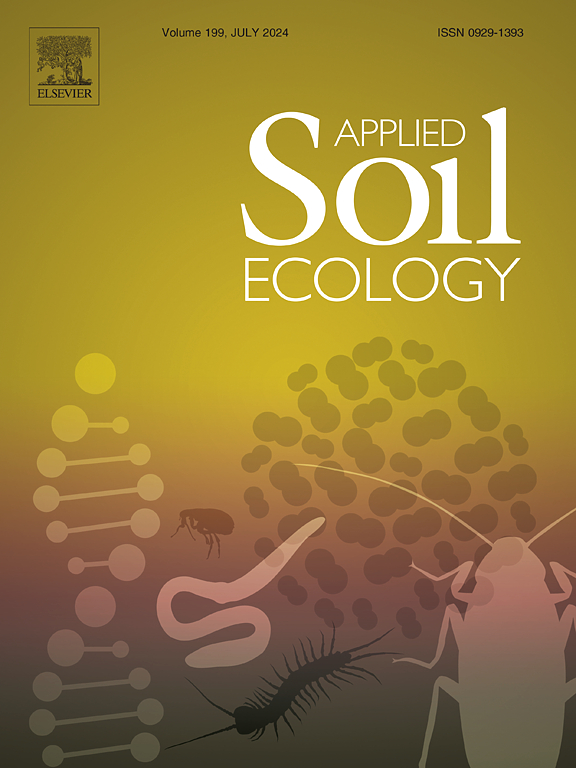Soil age and soil phosphate content shape microarthropod communities of Dutch forest ecosystems
IF 4.8
2区 农林科学
Q1 SOIL SCIENCE
引用次数: 0
Abstract
Soil microarthropods, particularly mites, are key contributors to the decomposition of plant litter and nutrient cycling in forest ecosystems, where they can reach high levels of biodiversity. However, their diversity can be impacted by soil disturbances such as soil compaction or organic matter removal and by phosphorus limitation, driven by nitrogen (N) deposition.
This study compares microarthropod communities across forest locations differing in soil age and soil phosphate levels, using a trait-based approach focused on the species' feeding guild and body size. We compared 3 old forest soils, 19 young forest soils, and 10 old hedgerow soils. The old hedgerow soils resembled old forest soils in age, but have higher P-availability, allowing us to disentangle these effects. We hypothesized that older soils, with minimal disturbance, will support higher species richness due to their poor colonization abilities.
Our results show that older soils have indeed a higher microarthropods species richness than young soils. Greatest differences in the species richness and abundance were observed in (herbo)fungivorous grazers, a group of mites essential for decomposition. Consequently, young forest soils are expected to exhibit a less efficient decomposition process. The higher P-availability in old hedgerow soils likely explains their greater richness of herbivorous grazers and the higher abundance of larger mite species, by creating a more efficient trophic transfer that supports larger bodied consumers. Our findings indicate that differences in body size and feeding guild correspond to differences across forest soils in terms of age and P-availability of forest soils.
求助全文
约1分钟内获得全文
求助全文
来源期刊

Applied Soil Ecology
农林科学-土壤科学
CiteScore
9.70
自引率
4.20%
发文量
363
审稿时长
5.3 months
期刊介绍:
Applied Soil Ecology addresses the role of soil organisms and their interactions in relation to: sustainability and productivity, nutrient cycling and other soil processes, the maintenance of soil functions, the impact of human activities on soil ecosystems and bio(techno)logical control of soil-inhabiting pests, diseases and weeds.
 求助内容:
求助内容: 应助结果提醒方式:
应助结果提醒方式:


